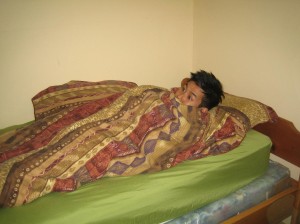There are various illnesses that can cause fever among children including flu, common cold and bacterial infections. It is important to note that fever is considered as a normal bodily response to illnesses. A low-grade fever is not an issue to be worried about unless it persists for several days. Nevertheless, there are several home remedies that can help lower the fever in order to make the child comfortable. It is best to register for first aid training today so that the appropriate measures can be taken to help reduce the fever and provide comfort to the child.
http://youtu.be/Gj6kpUFw4Og
Keeping the child cool
The commonly used method in order to reduce the fever of a child is to make sure that his/her environment is comfortable. This involves dressing him/her with light clothing and maintaining the room temperature as cool as possible. When the child is sleeping, cover with a light blanket unless he/she is shivering which would surely require another blanket.

Providing plenty of fluids
Always bear in mind that fluids play an important role in the management of fever. Fluids not only help cool down the body, but adequate intake can help prevent dehydration which is an issue to be worried about in a child who has fever. The doctor will recommend providing water, popsicles, clear soups and gelatin to the child. Infants below one year old are given an oral rehydration which not only helps with hydration but also ensure that the proper balance of electrolytes is restored.
Lukewarm bath
You can give the child a lukewarm bath to lower down the temperature. In most cases, the doctor will recommend a 5-10 minute immersion in lukewarm water. The temperature of the water used is vital since if it is too hot, it can increase the temperature. If the water is too cold, the child will start to shiver which also increase the body temperature. The doctor will also recommend giving the child acetaminophen before the bath to prevent shivering.
Rest
A sick child should be given enough time to rest since it helps hasten the recovery. Of course, rest is vital if the child has fever. Always remember that activity can increase the body temperature which will only make the fever worse.
When to consult a doctor
Generally, the threshold for a fever is a body temperature of 99.5 degrees F taken orally or a rectal temperature of 100.4 degrees F. An infant below 3 months old with this temperature must be checked by a doctor. As for infants 3-6 months old, a doctor must be consulted if the fever increases up to 101 degrees F or higher. For children 6 months or older, a fever of 102 degrees F or higher that lasts for more than 2 days must be assessed by a healthcare professional.
